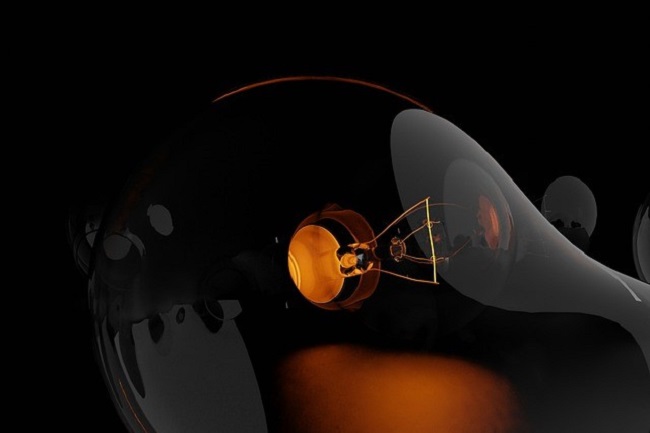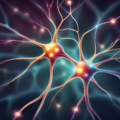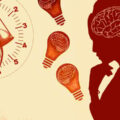A Fundamental Issue
I was horrified to watch the “60 Minutes” program Sunday, April 12th, 2020 on television that dealt with the colossal number of Americans suffering from obesity, chronic fatigue and diabetes, both types I and II. About half of the program dealt with the essential consumption of natural food, reminding us that Hippocrates, 400 BCE said “let food be your medicine and let medicine be your food”. This must have been said thousands of times but everything in our modern civilization is totally destructive to the whole idea. I have seen so many hundreds, if not thousands, of people whose illness was caused by themselves. It was treatable by making sure that each individual understood the fundamental issue. So before I illustrate a typical illness situation within my experience, I will try to state what I mean by describing what I consider to be the “fundamental issue”.
“We behave according to what we eat”.
I have stated this so many times but unfortunately the American medical profession is the major inhibitor to its clinical success. When a suffering patient with many symptoms arising from what I call “dietary mayhem”, goes to his or her physician, they simply do not recognize the clinical expression of the popular high calorie malnutrition. The many symptoms are usually referred to as psychosomatic and the unfortunate patient is told that “it is all in your head”. I have witnessed this so many times; I cannot understand why the physicians don’t pay a little more attention to what the patient is trying to tell them. Often the patient has discovered the real cause of the problem but find that her words are considered to be the voice of ignorance and delusion.
Food and Energy
Our food consists of fuel that must be burned (oxidized) to liberate energy. In any text this element of the food is described as “calories”. The energy quality of our food intake is measured in kilocalories and a single one is defined as “the energy needed to raise the temperature of 1 kg of water through 1°C”. Notice the use of the word energy, the result of oxidation. Now, as everyone knows, vitamins and minerals, known as non-caloric nutrients, are vital to the release of energy from the caloric elements. To understand how this combination of chemicals works, there must be a ratio of calories to the noncaloric elements. That is why high calorie foods without vitamins or minerals are known as empty calories. It is the consumption of empty calories across America that has given rise to the idea of high calorie malnutrition. I have actually seen a written statement that this is an oxymoron. “How can excess of calories be considered a form of malnutrition?” It seems that few people understand this vital ratio and they seem to think that as long as you are consuming calories, you will flourish. Also, the food industry fills the grocery store with cartons of temptation and seems to have no regard for the well-being of its consumers. They keep using the term “all natural” so much, it becomes meaningless.
A Typical Case of Energy Deficiency
I was a pediatrician at Cleveland Clinic and one of my interests was sudden infant death (SIDS). So one day I was having lunch with one of the surgeons who practised ear nose and throat surgery. He told me that he had been called to the medical ICU because a woman had stopped breathing and he had performed a tracheostomy. He was intrigued by the reason for this disaster and, knowing my interest, he suggested that I should take a look. Pediatricians are assumed to be familiar with diseases of children but ignorant of adult disease and I knew that I was not welcome. I found a 50-year-old woman who was grossly edematous and unconscious. Without considering the technical details, I proved that she had the vitamin B1 deficiency disease beriberi. With injections of thiamine she became conscious and the edema disappeared. During her recovery she developed a progressive anemia, thought to be evidence of internal bleeding, but all the tests were negative. I took some urine from her and subjected it to a special type of test. It showed that she was deficient in folate, another B vitamin. It is important to note that she did not develop folate deficiency until she began her recovery from thiamine, it was masked by cellular energy deficiency. When she began to receive folate there was an immediate recovery from the anemia but she had been given at least one injection of thiamine by then.
She was discharged from hospital, wheelchair bound, taking both thiamine and folate. When she returned as an outpatient, I found that she had a skin rash and that her legs were, if anything, weaker. It had long been known that anemia would develop from either folate or B12 deficiency, but the folate deficient variety required B12 supplementation as well as folate. If B12 was not provided, the patient would develop paralysis of the legs and I had forgotten this. Also, it is not well-known that vitamin B12 deficiency can cause a skin rash. I gave her an injection of B12 and the rash disappeared. However, for a few days she had muscle aches and fever that I did not understand at that time. Looking back I would now assume that this was what we call “paradox” on Hormones Matter. To those that may not have read about this it is the temporary worsening effect by introducing an essential nutrient to someone who has long been deficient in that nutrient. One of the things that had probably been a serious indictment on self cause was that she was a chronic cigarette smoker, a well-known habit that damages oxidation.
Energy Metabolism
Can we extrapolate from this case any general ideas about how medical treatment should advance? Perhaps the general opinion would be that this is a rare and unusual case, an outlier from the “usual and customary diagnosis”. But if we consider the facts; long-term cigarette smoking, dietary indiscretion and genetic risks appear to be quite common. I treated a 12-year old girl with a conventional diagnosis of Juvenile Rheumatoid Arthritis, using a nutritional supplement. Without discussing the technicalities of laboratory evidence, it was clear that defective energy metabolism was the underlying cause. The combination of genetic risk, failure to adapt to any form of stress (infection, trauma, chronic useless brain activity etc) and inadequate energy metabolism are the three factors that either collectively or singly lead to breakdown of health. As Selye predicted, energy for adaptation is the essential ingredient.
We Need Your Help
More people than ever are reading Hormones Matter, a testament to the need for independent voices in health and medicine. We are not funded and accept limited advertising. Unlike many health sites, we don’t force you to purchase a subscription. We believe health information should be open to all. If you read Hormones Matter, like it, please help support it. Contribute now.
Yes, I would like to support Hormones Matter.
Image by Inns-Web from Pixabay.
This article was published originally on April 22, 2020.

















